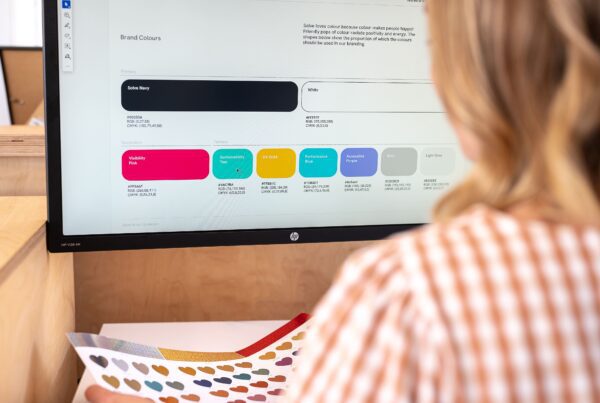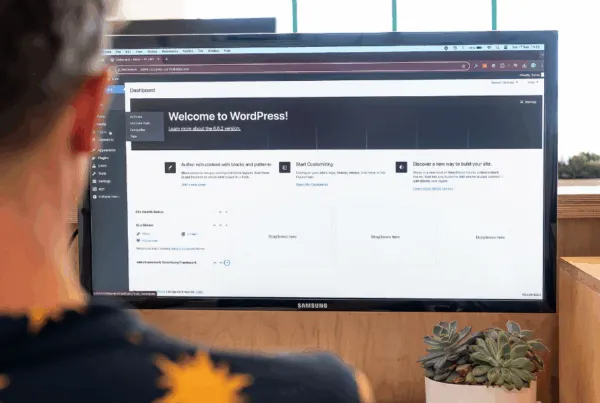
Table of Contents
What Is Accessible Website Design?
Defining Accessibility in the Digital World
Digital accessibility, like many physical disabilities that often go unacknowledged, is largely invisible, but it’s every bit as essential. It ensures that everyone, regardless of ability, can navigate and interact with online content.
This includes features like descriptive alt text for images, captions for videos, high colour contrast, and full keyboard navigation. Beyond being good design practice, accessible website design is also a legal requirement in many regions and a key factor in creating a truly inclusive online experience.
Why Accessibility is an Important Consideration in Website Design
The internet should be a digitally inclusive space, and your business has a role to play in making that happen. Accessibility, usability, and user experience are all interconnected; when you prioritise one, you naturally strengthen the others.
Designing with accessibility in mind ensures your website is intuitive, engaging, and user-friendly, improving satisfaction and expanding your reach.
The Ethical Case for Accessible Website Design
Designing with Empathy and Inclusion in Mind

The truth is, in our increasingly digital world, it’s easy to overlook the ethical responsibilities that come with creating online experiences. Behind every screen is a real person, with unique needs, abilities, and circumstances. When we design with empathy, we acknowledge those differences and create spaces that welcome everyone. Bringing empathy to the forefront of business and design means opening our digital arms to people from all walks of life.
Accessibility as a Core Value, Not an Afterthought
It’s one thing to implement accessible website design, but true inclusion goes deeper. Accessibility needs to be part of your organisation’s core values, woven into your thought processes, decision-making, and everyday practices. When accessibility is treated as a mindset rather than a checklist, it naturally becomes part of how you design, communicate, and connect with your audience.
Building Trust Through Inclusive Experiences
Without realising, consistency in inclusive experiences immediately builds your authenticity as a trustworthy business. Whilst accessibility should be the bare minimum, many companies are still overlooking its value.
By prioritising inclusivity throughout your content and website, you will draw a positive conclusion about your business from your audience, such as being thoughtful, considerate, and human first. You’ll be building connections through accessible web design.
The Legal Imperative for Website Accessibility
Understanding Accessibility Laws and Standards

There are laws in place to ensure businesses take accessibility seriously. In the online world, compliance often means aligning with standards such as Section 508, the Americans with Disabilities Act (ADA), or the Web Content Accessibility Guidelines (WCAG 2.2) – not the catchiest of titles, but crucial nonetheless.
When we talk about ‘compliance’, it can sound like we’re reducing accessibility to a checklist, which somewhat contradicts the deeper, human-centred approach we’ve been discussing. Still, meeting these standards is essential for fulfilling legal obligations and creating an inclusive digital environment. While accessibility laws vary by region, they all share the same goal: ensuring equal access for everyone online.
The Risks of Non-Compliance
Failing to comply with accessibility laws can expose your business to serious legal risks, including lawsuits and financial penalties. Beyond the legal implications, non-compliance sends a damaging message about your brand’s values.
Excluding people with disabilities doesn’t just harm your reputation; it also shuts out an entire audience from engaging with your content, products, or services. In other words, neglecting accessibility means losing visibility, trust, and valuable connections.
How Compliance Protects Your Brand
By adhering to accessibility standards, your business signals professionalism, responsibility, and thoughtful design in an often noisy digital landscape. Accessible brands are not only more resilient to legal scrutiny but also inspire confidence among customers, partners, and stakeholders.
The Commercial Advantages of Accessible Website Design
Reaching a Wider Audience
With an estimated 1.3 billion people worldwide living with disabilities, making your content accessible opens your brand to a much larger audience. This number is only growing as populations age, making inclusivity more important than ever.
By designing digital experiences that everyone can access, you expand your market and increase your global reach, creating a shared, universally good experience for all users.
Enhancing Brand Reputation and Loyalty
You can strengthen your brand’s reputation when you start to put accessible design at the forefront of your design decision-making. When users see that your business values inclusivity, thoughtfulness, and ethical design, they’re more likely to trust and engage with your brand.
Accessibility signals that you put people first, fostering loyalty and encouraging repeat interactions. Over time, consistently inclusive experiences position your business as responsible, forward-thinking, and genuinely customer-focused.
Accessibility as an SEO and Conversion Booster
If you’re a decision maker looking at the bottom line, listen up – accessibility is a business advantage. Accessible website design not only broadens your audience but also improves your SEO, making your site more visible and driving higher conversions. In other words, accessibility isn’t just good ethics, it’s a smart strategy.
How to Make Your Website More Accessible
Start with an Accessibility Audit
Begin your journey toward a more inclusive website by conducting a thorough accessibility audit. Ask yourself if your site meets WCAG (Web Content Accessibility Guidelines) standards. An audit helps you identify barriers and sets a clear roadmap for improvements, making it a great place to start.
Apply Inclusive Design Principles Across Your Site
Creating an accessible website means designing with all users in mind. Key principles to implement include:
- Intuitive navigation: Ensure menus and links are easy to use for everyone, including keyboard and screen reader users.
- Descriptive media: Add meaningful alt text to images and provide captions or transcripts for videos.
- Keyboard accessibility: Make sure all interactive elements can be accessed without a mouse.
- Readable typography: Use clear, legible fonts and maintain proper spacing.
- High colour contrast: Choose high contrast colours that enhance readability for users with visual impairments.
By applying these principles consistently, you make your site usable and enjoyable for a wider audience.
Keep Accessibility Ongoing
Accessibility isn’t a one-time fix; it’s a habit. Test updates, gather feedback from users with disabilities, and continually make improvements. Treat accessibility as a standard part of your website, rather than something you check off once and forget.
Make Your Website Accessible
Join the businesses setting the standard for empathetic, accessible website design.





